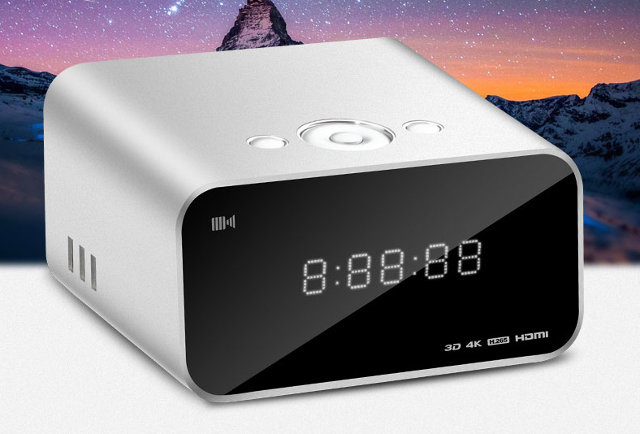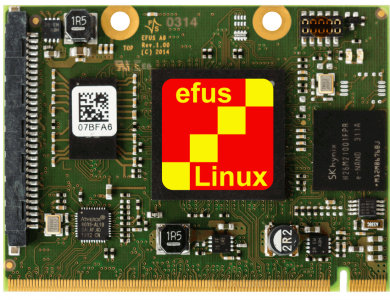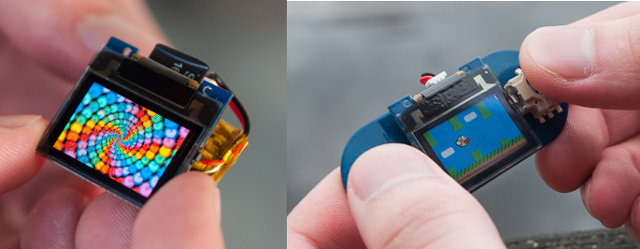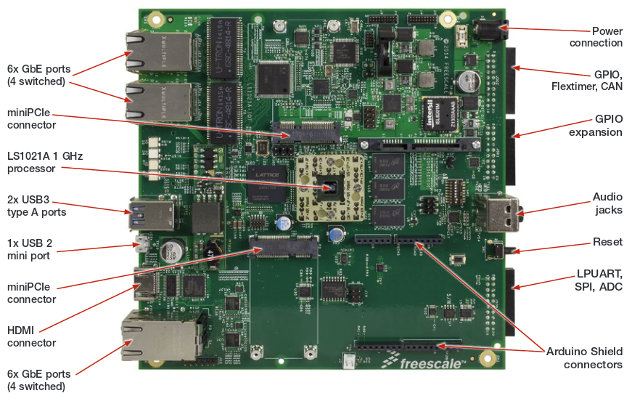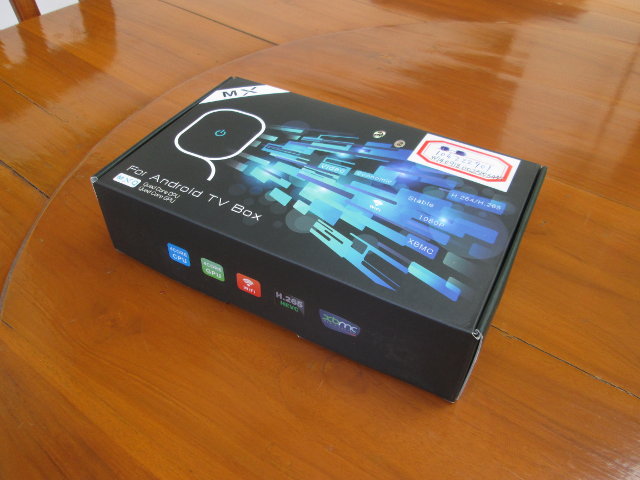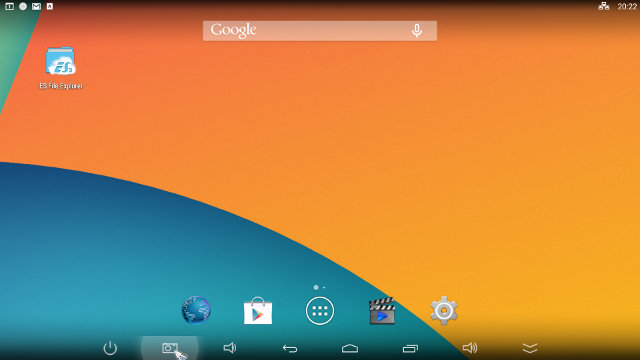Kaiboer Q8 may look like an alarm clock radio, but it’s definitely an upcoming Android media player powered by Mstar 9810 SoC with 2GB RAM, 16GB eMMC, USB 3.0 ports, Gigabit Ethernet, and an internal 2.5″ SATA bay. The company had previously launched three MSO9810 Android STBs, two of which did not support hard drives, and one with a 3.5″ SATA bay, so this new product fills the void for 2.5″ hard drives. Kaiboer Q8 specifications: SoC – Mstar MSO9180D1R Quad core ARM Cortex A9 @ 1.5GHz with a quad-core ARM Mali-450MP GPU. System Memory – 2GB DDR3 Storage – 16 GB eMMC + microSD card slot + internal SATA bay for 2.5″ drives Video I/O – HDMI in, HDMI out (All models) Audio I/O – HDMI in/out, optical S/PDIF Video Codecs – Up to 4K. MPEG-1/2, MPEG-4, DivX, H.264, H.265 VC-1, H.263, Real Media, MVC, etc… Audio Formats – […]
F&S Elektronik Systeme Introduces eFus A9 Industrial Computer Modules Powered by Freescale i.MX6 SoC
F&S Elektronik Systeme, a German embedded systems company, has announced their efus A9 Computers-on-Module (CoM) based on Freescale i.MX6, are now in mass production. The CPU comes in two variants A9V2 for i.MX6 Solo, and A9V3 with i.MX6 DualLite, both of which are certified for automotive and industrial applications, and support commercial, extended, and industrial temperature ranges. eFuse A9 computer-on-module specifications: SoC – CPU Freescale i.MX6 Solo (eFus A9V2) or DualLite (eFus A9V3) @ up to 1.2 GHz + Vivante 2D and 3D GPUs System Memory – 512MB (Up to 1GB RAM) Storage – 256 MB NAND flash (Up to 1GB), 2 GB eMMC (eFus A9V3 only. up to 32GB), optional SPI NOR, optional I2C EEPROM Display I/F – 18-bit RGB, 2x 24-bit LVDS, and DVI Other interfaces available via 230 pins MXM-2 edge connector: 2x SD card I/F 1x Gigabit Ethernet 1x USB Host, 1x USB Device 2x CAN […]
$25 TinyScreen is an OLED Display for TinyDuino Arduino Compatible Board (Crowdfunding)
Back in 2012, Tiny Circuits launched a Kickstarter campaign for TinyDuino, an Arduino compatible board that’s… tiny, based on Atmel Atmega328P, and supports tiny stackable shields in a similar fashion to Microduino (launched in 2013). The campaign was successful, and the company is now back on Kickstarter with TinyScreen, an OLED display that can be stacked on top of TinyDuino to create a smartwatch, a minuscule gamepad, smart glasses, and more. TinyScreen technical specifications: 96×64 OLED display, 16-bit color depth 0.96″ (24.4mm) viewable area Software controllable backlight (OLED brightness) Power down mode Four push buttons along the sides (connected to IO pins) SPI interface for display Power Supply – 3.0V to 5.5V operation (higher voltages supported with TinyShield power regulator) Power Consumption – 20 – 45mA max supply current (depending on brightness) Dimensions – 25.8mm x 25.0mm Programming of TinyDuino can be done through a web interface for Arduino called […]
Freescale LS1021A-IOT IoT Gateway Reference Design Powered by QorIQ LS1021A Dual ARM Cortex A7 SoC
Freescale has just launched a an IoT gateway reference design powered by their QorIQ LS1021A communication processors running Linux/OpenWRT, designed in partnership with TechNexion, and targeting various IoT applications such as building/home management, smart cities, networked industrial services, etc… Beside the dual core Cortex A7 QoirIQ processor, the board features six Gigabit Ethernet ports, two USB 3.0 ports, a SATA 3 port, two mini PCIe connector, an LVDS interface, HDMI output, Arduino UNO compatible headers, and various others expansions headers. LS1021A-IOT IoT gateway Specifications: SoC – Freescale QorIQ LS1021A dual core Cortex A7 communication processor @ 1 GHz (5,000 coremarks) MCU – Freescale Kinetis K20 Cortex M micro-controller System Memory – 1 GB DDR3L Storage – 1 Gb QSPI NOR Flash, SDHC slot (up to 32 GB) populated with a 4GB SD card, 1x mSATA 3 slot Connectivity – 6x Gigabit ports via SGMII (Serial Gigabit Media Independent Interface) and […]
KDDI Unveils Tiny BLE/Zigbee Development Board Running Mozilla Firefox OS
KDDI has recently announced Open Web Board, an HDMI TV stick powered by Rockchip RK3066, and running Firefox OS, just like the recently announced MatchStick. The board is however aimed at embedded and web developers who want to create apps for Firefox OS, and interface with external devices over Bluetooth Low Energy or Zigbee (optional module) communication, optionally using Gluin, a web based graphical “application development tool that enables simple linking programming between electronic devices”. Open Web Board specifications: SoC – Rockchip RK3066 dual core Cortex A9 processor @ 1.6 Ghz with Mali-400 MP4 GPU System Memory – 1 GB RAM Storage – 8 GB flash Video Output – HDMI USB – 1x USB 2.0 host port, 1x micro USB for power Connectivity – 802.11 b/g/n Wi-Fi (AP6210 module), Bluetooth 2.1 (HFP/A2DP/AVRCP)/4.0 GATT. and optional Zigbee via external module Dimensions – Small This dongle runs Firefox OS 1.4. KDDI showcased […]
Unboxing of MXQ S85 Android Media Player Powered by Amlogic S805 Processor
Gearbest sent me MXQ S85 Android media player powered by Amlogic S805 quad core processor with 1GB RAM, 8GB internal storage, and Ethernet/Wi-Fi/Bluetooth connectivity. MXQ S85 looks very similar to EM6Q-MXQ, another Amlogic S805 based Android STB, which I reviewed last week, but these are two distinct hardware platforms. Today, I’ll take some pictures of the devices, and the board to see which components are used, and who made the board, and I’ll write a full review in a few days. MXQ S85 Pictures I’ve received the parcel via DHL in the nameless package below where they just indicate it’s and Android TV box with a quad core processor, quad core GPU, pre-loaded with XBMC, and supporting HEVC / H.265 The package contains the box, HDMI and AV cables, an OTG adapter, a 5V/2A power supply, an IR remote requiring two AAA batteries, and a user’s manual in English. The […]
Current Performance and Stability Issues on AllWinner A80 OptimusBoard Development Board
Sine A80 OptimusBoard is the first ARM hardware that supports both USB 3.0 and Gigabit that I’ve ever owned, so I though it might be interesting to see what performance I could get with a USB 3.0 hard drive through the USB 3.0 OTG port of the board. For testing purpose, I bought a USB 3.0 OTG adapter on Ebay, but I did not look closely enough as it turned out to be only a USB 3.0 OTG to USB 2.0 female adapter capable of USB 2.0 speeds… Kind of useless item since you can plug a standard USB 2.0 OTG adapter into a USB 3.0 OTG receptacle. But I tried my hard drive anyway, and quickly realized write performance was very poor at 3 MB/s on the NTFS partition, whereas most other devices can handle at least15 MB/s, and usually over 25 MB/s. So I contacted Allwinner with this […]
Review of Tronsmart Orion R28 Meta 4K/H.265 Android TV Box
It’s been a little while since I unboxed Tronsmart Orion R28 Meta Android TV box, but since the product was still consider “beta” by GeekBuying, I wanted to wait for a OTA firmware update (109k4), which was released at the beginning of the week. Since I’ve already listed the technical specifications, and showed pictures of the board and device, I’ll focus on feature tests and benchmarks results in the review. First Boot, Settings and First Impressions I quickly tried the basic infrared remote control, inserting two AAA batteries, and it does the job, but for Android, you really need a pointing device, so I switched to Mele F10 Deluxe air mouse during testing. I’ve connected a whole bunch of cable, and peripherals to the box including an HDMI cable, a USB hard drive, an Ethernet cable, a USB webcam, and a USB hub with RF dongles for my air mouse […]


